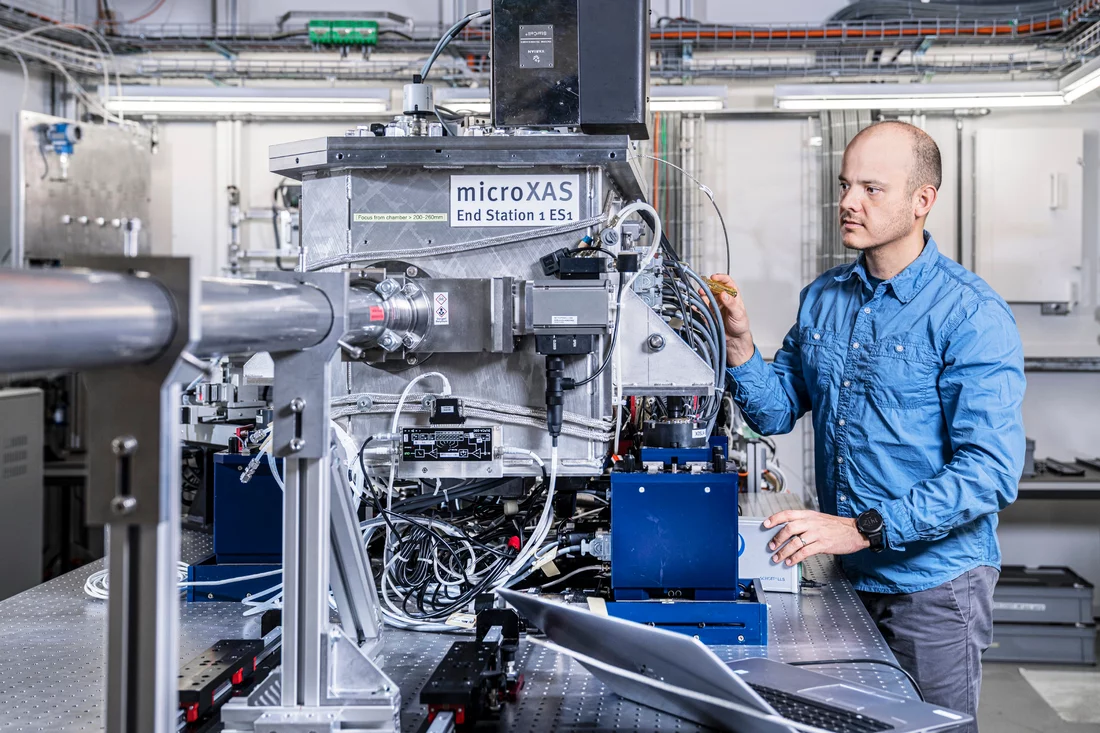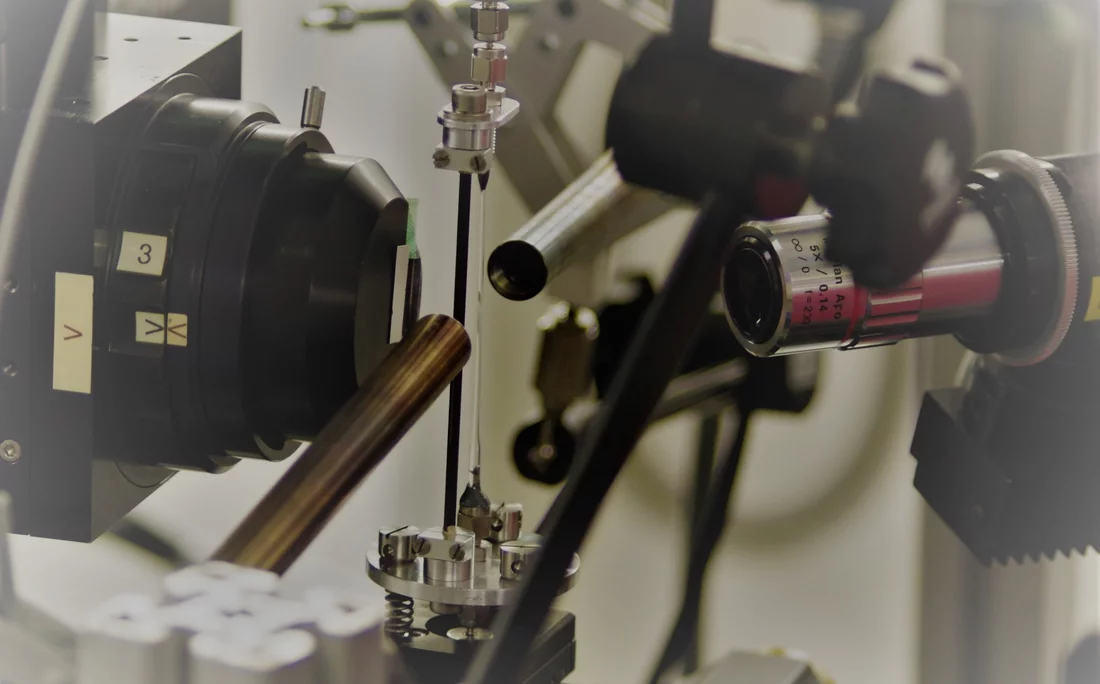Catalysis plays a critical role in the modern world, with 95 percent of all chemicals produced using catalysts. These materials also play a key role in environmental protection and reduction of emissions. Technical and industrial catalysts are often complex, and must exhibit high pressure resistance and mechanical strength, while additionally often operating under dynamic environmental conditions. Understanding the structure and function of these catalysts in their working state in three dimensions is a great challenge. A research team at Karlsruhe Institute of Technology (KIT), in cooperation with scientists from the Swiss Light Source SLS of the Paul Scherrer Institute PSI in Switzerland and the European Synchrotron Radiation Facility (ESRF) in France, have developed a new diagnostic tool for studying catalysts at work. This method known as operando X-ray spectrotomography can visualise the structure and gradients of complex technical catalysts in 3D space, allowing us to take a look inside of functioning chemical reactors. The results are reported in Nature Catalysis.
Wherever you look in the chemical, material, and energy industries, behind the scenes you will likely find a catalyst at work. In basic terms, catalysts are materials used to improve the rate of chemical reactions. Although this sounds like a simple definition, the result is that catalysts are versatile and valuable materials which underpin a range of important processes we depend on every day. One example is the automotive catalytic convertor, responsible for treating harmful emissions from internal combustion engines. Billions of cars are on the road each day around the world, so even small efficiency increases in removing harmful chemicals such as carbon monoxide, nitrogen oxides, and particulate matter from their exhausts, can have a huge impact on air quality and human health. However, to improve on existing catalytic materials and processes, we first need to know exactly how they work, and this is no simple task. "Whether in a large chemical reactor, in a battery, or in the back of your car, technical and industrial catalysts often have a highly complex structure," says Thomas Sheppard from the Institute for Chemical Technology and Polymer Chemistry (ITCP) at KIT, who led the study. "But often they are considered as a uniform ‘black box’. To really understand how these materials function, we need to take a look inside the reactor when the catalyst is working, so to shine a light inside this black box. But the dream scenario would be an analytical tool to detect the complex 3D structure of the active catalyst at the same time, which is pretty challenging."
3D images of a sample
The team led by Sheppard (KIT) turned to X-ray computed spectrotomography approaches developed by Dario Ferreira Sanchez from PSI to solve this puzzle, performing experiments in close cooperation with synchrotron radiation facilities. The experiments were performed at the microXAS beamline in Swiss Light Source SLS in Switzerland, and pilot experiments were also done at the ID24 beamline in the ESRF, in France. "Computed tomography produces 3D images of a sample, including the exterior and interior, without needing to cut it open", says Dario Ferreira Sanchez. By using a special reactor, they were able to perform tomography and X-ray spectroscopy of a catalytic process at work, and therefore track the 3D structure of an emission control catalyst under conditions just like those in a real automotive exhaust. This approach, known as operando X-ray spectrotomography, provides not only the 3D structure of the sample but also important chemical information. "Since catalysts often show such a complex and non-uniform structure, it is important to know whether the entire catalyst volume or only parts of it are performing their chemical function as intended," explains Johannes Becher from ITCP, one of the main authors of the study. "Operando spectrotomography lets us see exactly that. We can take 3D images of the active catalyst, looking at the specific structure and function of every single piece. This tells us if the catalyst is performing at maximum efficiency or not, and more importantly it helps us to understand the reasoning behind this." The team observed structural gradients of the active copper species within the catalyst during reaction, which have not previously been detected using conventional analytical tools. This is important diagnostic information in the performance of emissions control catalysts, but the method itself can be applied to many different catalysts and chemical processes. "Until now it was not possible to freely select any piece of a working catalyst and understand which reactions take place in there without disturbing it. Here we can follow which reactions are occurring, and why," explains Jan-Dierk Grunwaldt, also from ITCP. "This opens the door to evaluation of technical catalysts in a manner which was not possible before. This is really the key to improving our understanding of chemical processes and designing better and more efficient catalysts in future."
Based on a media release by Karlsruhe Institute of Technology (KIT).
About PSI
The Paul Scherrer Institute PSI develops, builds and operates large, complex research facilities and makes them available to the national and international research community. The institute's own key research priorities are in the fields of matter and materials, energy and environment and human health. PSI is committed to the training of future generations. Therefore about one quarter of our staff are post-docs, post-graduates or apprentices. Altogether PSI employs 2100 people, thus being the largest research institute in Switzerland. The annual budget amounts to approximately CHF 400 million. PSI is part of the ETH Domain, with the other members being the two Swiss Federal Institutes of Technology, ETH Zurich and EPFL Lausanne, as well as Eawag (Swiss Federal Institute of Aquatic Science and Technology), Empa (Swiss Federal Laboratories for Materials Science and Technology) and WSL (Swiss Federal Institute for Forest, Snow and Landscape Research). (Last updated in May 2020)
Contact
Dr. Dario Ferreira Sanchez
Beamline Scientist at microXAS, SLS
Paul Scherrer Institute, Forschungsstrasse 111, 5232 Villigen PSI, Switzerland
Telephone: +41 56 310 52 41, e-mail: dario.ferreira@psi.ch [English]
Original publication
Johannes Becher et al.: Chemical gradients in automotive Cu-SSZ-13 catalysts for NOx removal
revealed by operando X-ray spectrotomography
Nature Catalysis, 14 december 2020
DOI: 10.1038/s41929-020-00552-3
Copyright
PSI provides image and/or video material free of charge for media coverage of the content of the above text. Use of this material for other purposes is not permitted. This also includes the transfer of the image and video material into databases as well as sale by third parties.


